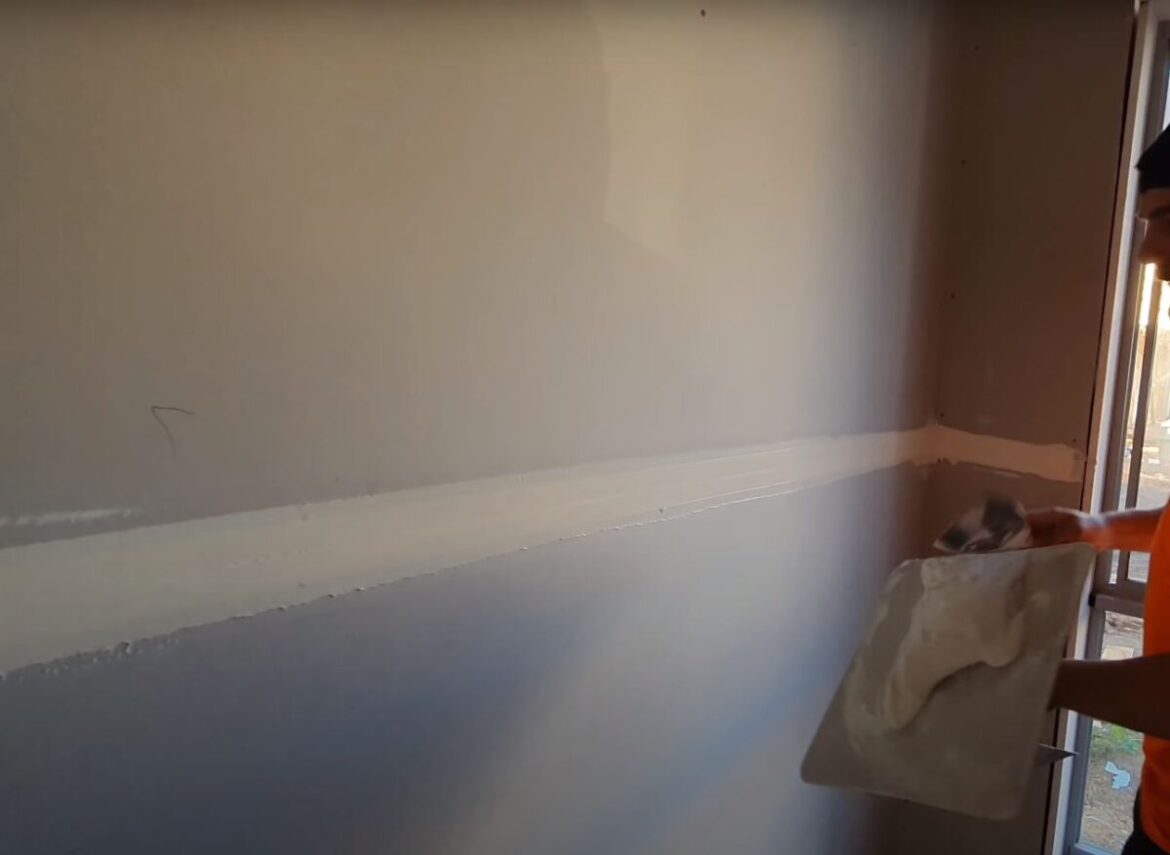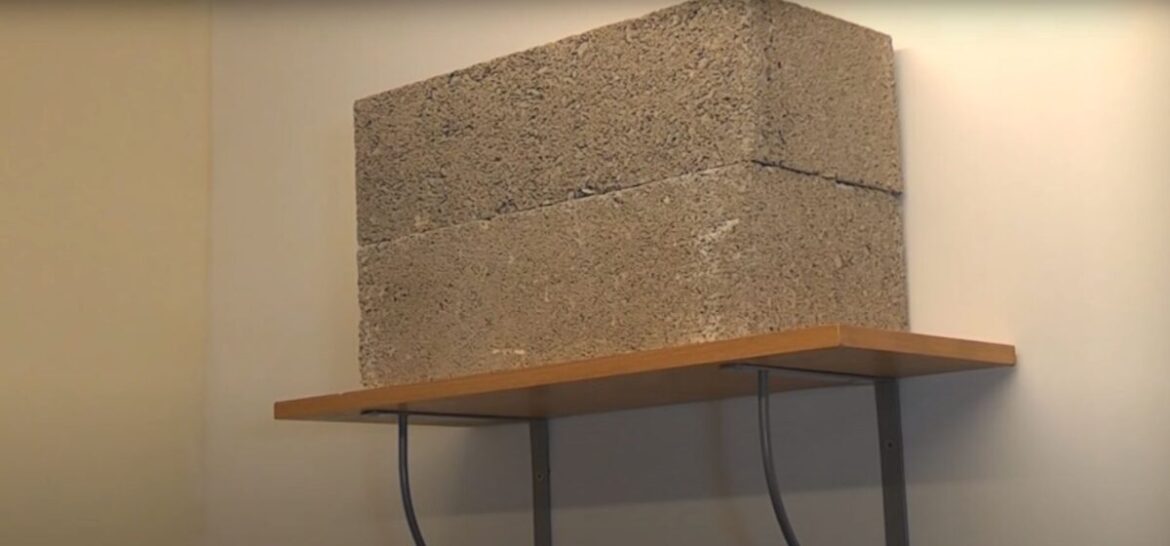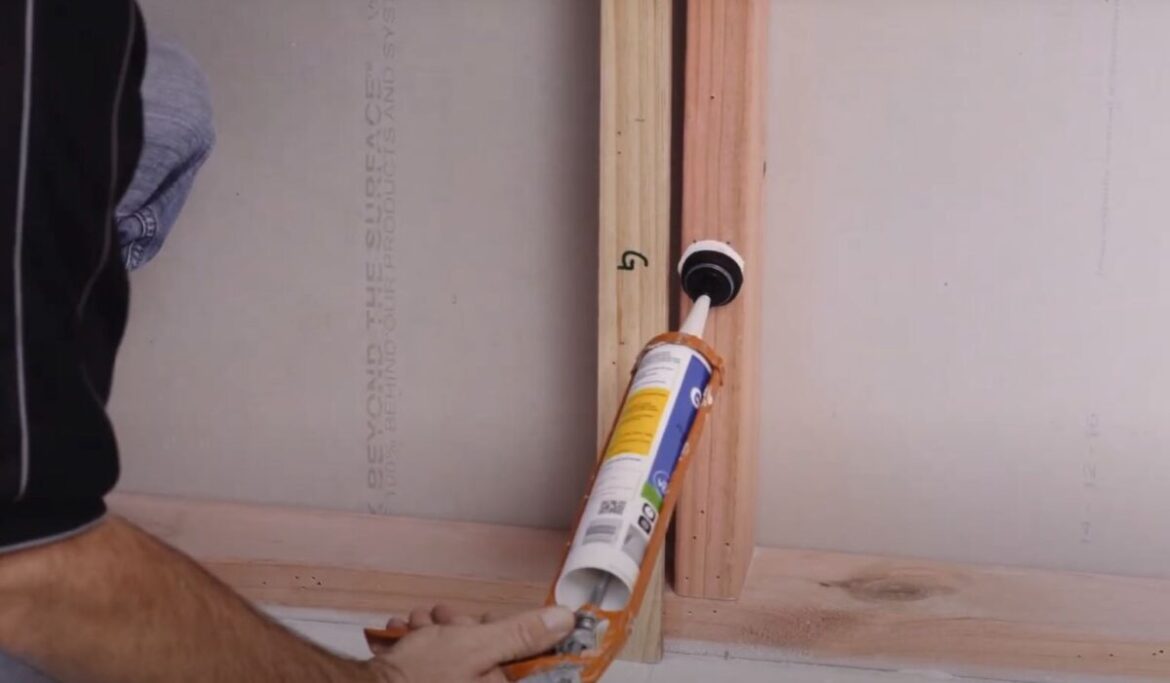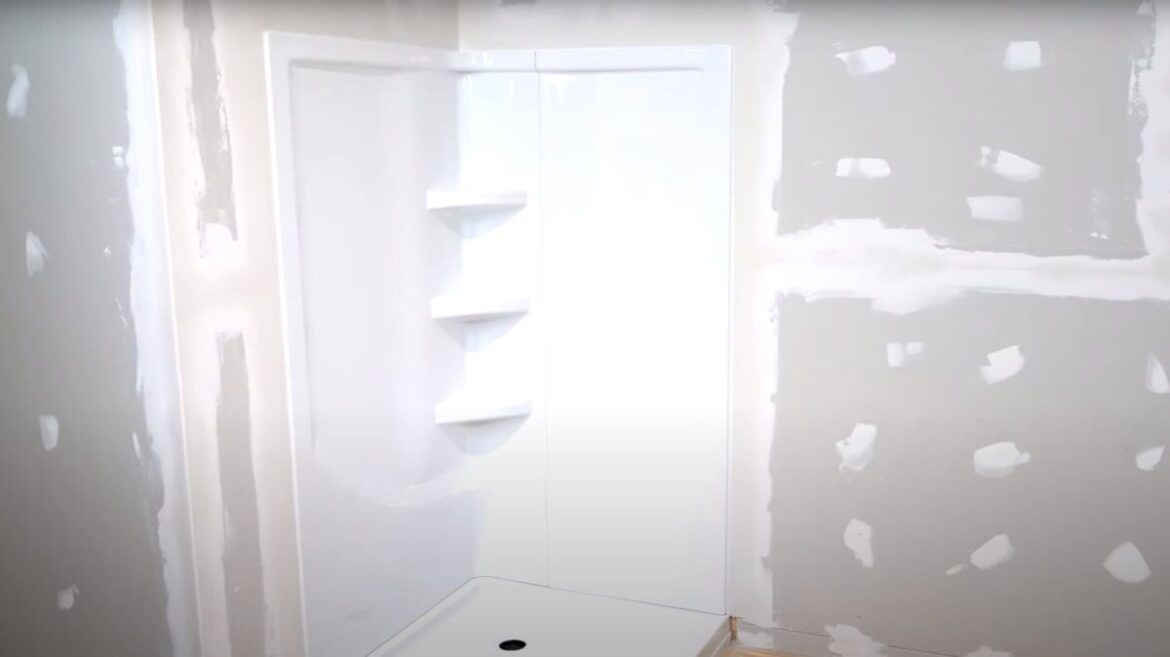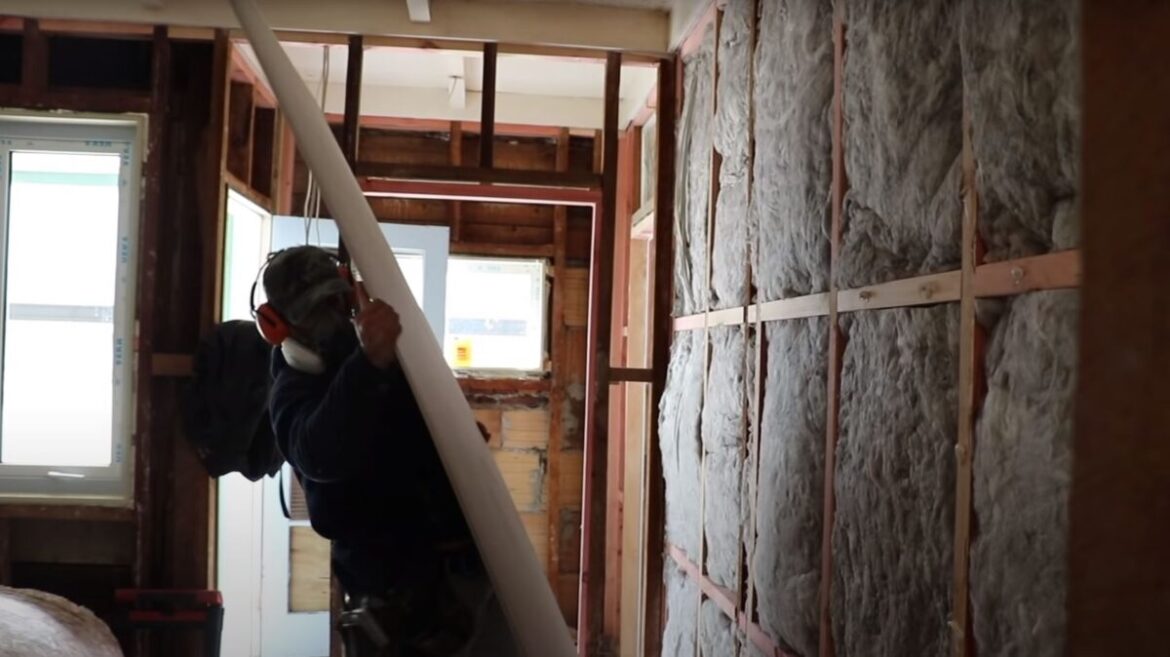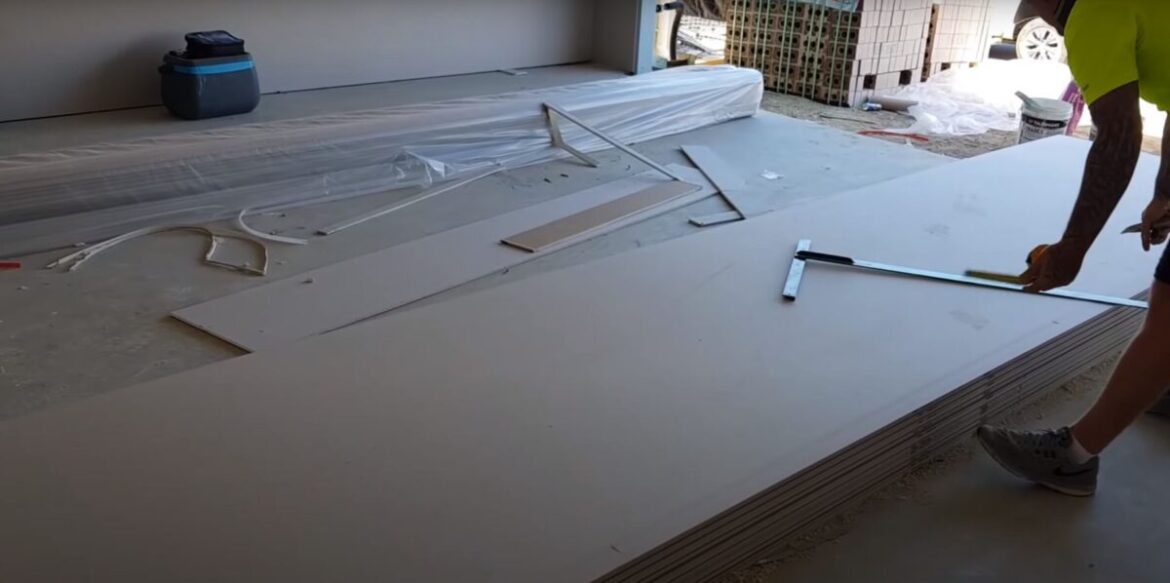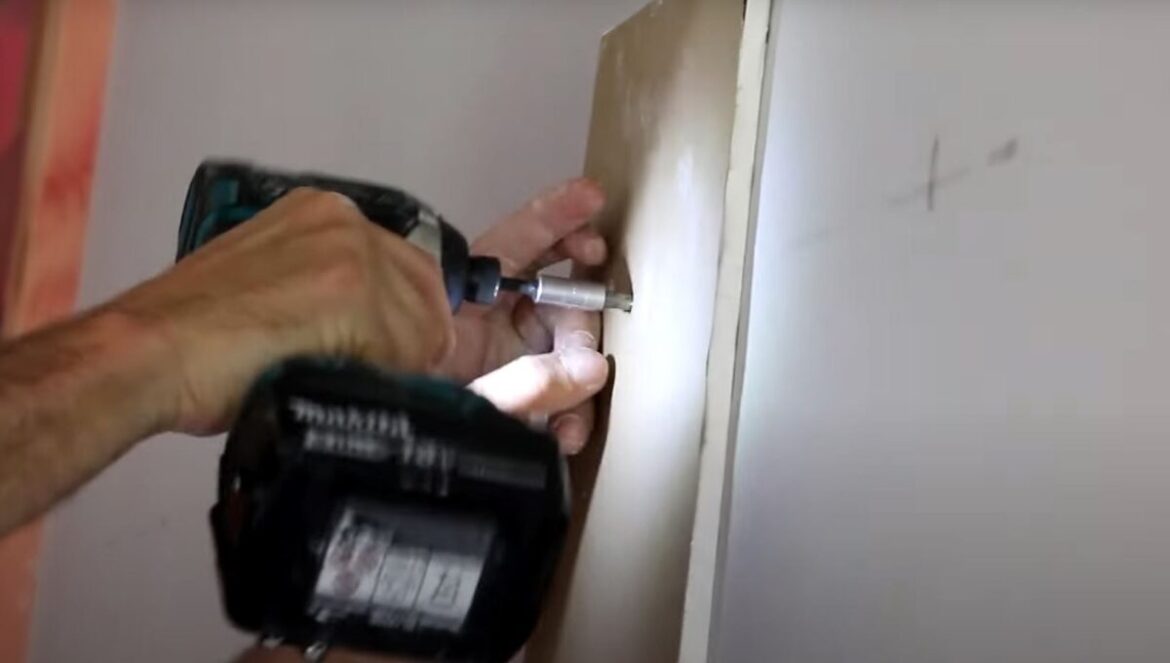Does Plasterboard Need Sealing Before Skimming?
Sealing Plasterboard: A Vital Step Before Skimming
Understanding Plasterboard Composition
Plasterboard, often termed “gib board” locally, is typically made of an inner layer of gypsum sandwiched between two outer layers of lining paper. This material is commonly used for constructing interior walls and ceilings, and its characteristics make it both a practical and versatile option. However, its porous nature means that, without proper preparation, it can absorb the moisture from wet plaster, potentially causing issues when skimming.
The Science Behind Sealing
When you’re dealing with a porous surface like plasterboard, sealing becomes a non-negotiable. The primary reason? Preventing rapid absorption of the moisture from the plaster. If the plaster dries too quickly, it can lead to a range of problems, including:
- Weakness in the finished surface
- An uneven finish
- The potential for future cracks or flaws
By sealing the plasterboard, you’re giving the plaster a fighting chance to bond correctly, ensuring a smooth and strong finish.
Health and Safety First
Always remember, regardless of where you’re situated, from central suburbs to places like Whitford, safety must always be paramount. Here are some key safety considerations:
- Ventilation: Always ensure your working area is well-ventilated, especially when working with sealants or plaster.
- Protection: Protective eyewear, gloves, and a mask can shield you from any dust or chemicals.
- Handling: Especially for larger boards, always have an extra pair of hands or use the appropriate equipment to avoid unnecessary strain or injury.
Why Some Skimp on Sealing
While the process might seem straightforward, you’ll find properties even in places as prestigious as Mairangi Bay where this crucial step has been skipped. Reasons might include:
- Misconceptions about the type of plasterboard used
- Overestimation of the board’s existing seal
- Underestimation of the risks involved in skipping the step
Plasterboard Varieties and Their Needs
| Type | Benefits | Disadvantages | Use Cases | Ingredients | Weaknesses | Mitigation |
| Standard Board | Versatile, Cost-effective | Can be fragile | General construction | Gypsum, lining paper | Porosity | Proper sealing |
| Moisture Board | Moisture-resistant | Slightly costlier | Bathrooms, kitchens | Gypsum, water-resistant paper | Not for exteriors | Ventilation |
| Fire Board | Fire-resistant | Heavy | Areas needing fire protection | Gypsum, glass fibres | Weight | Proper installation |
| Acoustic Board | Soundproof | Specialist installation | Studios, theatres | Gypsum, denser lining paper | Complex installation | Engage a professional |
Ensuring Best Results: Your Plasterers Auckland
While the DIY approach can be tempting, to get the most polished finish that stands the test of time, engaging professionals is the best route. A specialist team, like Your Plasterers Auckland, not only guarantees a stunning result but ensures that all technicalities, from sealing to skimming, are handled with the utmost precision.
In essence, while you can get various types of plasterboards in the market, ensuring proper sealing before skimming is the key to achieving a smooth, lasting finish. Whether renovating a historic property or constructing a new build, giving plasterboard the preparation it deserves ensures lasting beauty and structural integrity.
Skimming and Sealing Plasterboard: Your Queries Addressed
What is the primary purpose of sealing plasterboard?
Sealing plasterboard prevents it from rapidly absorbing moisture from the plaster, ensuring a smooth finish and proper bonding during the skimming process.
Is sealing necessary for all types of plasterboard?
While some plasterboards have specific resistances, like moisture boards, it’s generally recommended to seal all types to ensure a consistent and durable finish when skimming.
Can I skim without sealing the plasterboard?
While possible, skimming without sealing can lead to issues like a weak finish, rapid drying, and future flaws or cracks in the plaster.
How does sealing affect the drying time of the plaster?
Sealing ensures that the plaster doesn’t dry too quickly, allowing it adequate time to bond with the board and cure properly, resulting in a more robust finish.
Are there specific products recommended for sealing?
There are proprietary sealing products available, often termed ‘plasterboard sealers’ or ‘primers’. It’s crucial to choose a product designed for plasterboard to achieve optimal results.
How long should I wait after sealing before I start skimming?
Typically, you should follow the manufacturer’s instructions on the sealer. However, most products require a drying time of a few hours to 24 hours before skimming can commence.
What safety precautions should I take while sealing?
Work in a well-ventilated area, wear protective eyewear, gloves, and a mask to protect against any dust or chemical inhalation.
Does sealing plasterboard have any impact on its fire or sound resistance?
No, sealing is primarily to prepare the board for skimming. It doesn’t affect the inherent fire or sound-resistant properties of specific plasterboard types.
Where can I seek professional help for skimming in Auckland?
Your Plasterers Auckland offers expert plastering services, ensuring technical precision, optimal results, and adherence to best practices in sealing and skimming plasterboard.
How Much Weight Can GIB Board Hold?
GIB Board: Deciphering Its Weight Capacity
A Material Trusted Throughout Auckland
GIB board, widely recognized in the construction realm, has become a favoured choice among Aucklanders, especially in regions like Parnell and Remuera. Its versatility makes it an ideal component for numerous applications in residential and commercial settings. One prevalent question revolves around its ability to bear weight. Let’s delve deeper.
GIB Board Composition: The Basics
To understand its weight-bearing capabilities, it’s essential first to break down its composition. GIB board, commonly referred to as plasterboard or drywall in other parts of the world, is primarily constructed from gypsum sandwiched between two paper layers. This particular composition ensures a balance between durability and flexibility.
GIB Board Categories and Their Weight Capacities
Various GIB board types serve different purposes, each with its weight-bearing properties.
- Standard GIB Board: The everyday board found in many homes. Its weight-bearing capacity is suitable for standard fixtures like framed photos, clocks, and other lightweight items.
- GIB Braceline: Renowned for its bracing capabilities, this board is sturdier and designed to provide structural strength to buildings. Its weight-bearing capacity is significantly higher.
- GIB Aqualine: Specifically formulated for wet areas like bathrooms and kitchens, it has a weight capacity similar to the standard GIB board but offers resistance to moisture.
- GIB Fyreline: As the name suggests, this board is designed for fire resistance. Its weight-bearing capacity aligns closely with the standard board but boasts an enhanced ability to retard fire spread.
Health and Safety Considerations
As with any construction material, understanding and respecting the weight limits is pivotal for safety. Exceeding the recommended load on a GIB board can lead to structural issues, including sagging, cracking, or, in worst cases, the board coming off the wall. This is especially vital to remember when installing heavier fixtures like large mirrors, shelves bearing heavy items, or mounted televisions. Always ensure fixtures are anchored into the studs behind the GIB board to ensure maximum weight-bearing capacity.
Exceptional Cases: Going Beyond the Norm
While GIB boards have general weight capacities, these can vary based on:
- Board Thickness: A thicker board generally offers a higher weight-bearing capacity.
- Stud Spacing: The closer the studs are spaced, the greater the weight distribution, enhancing the weight the GIB board can carry.
- Anchor Types: Using appropriate anchors designed for GIB can drastically increase the weight-bearing ability.
Comparison of GIB Types in Auckland
| GIB Type | Benefits | Disadvantages | Primary Use | Material Ingredients | Weaknesses | Weight Bearing Capacity | Mitigating Measures |
| Standard | Versatile, cost-effective | Not moisture or fire-resistant | General walls, ceilings | Gypsum, paper | Can sag if overloaded | Suitable for lightweight fixtures | Ensure fixtures are anchored to studs |
| Braceline | High strength | Slightly more expensive | Structural bracing | Reinforced gypsum, paper | Heavy, requires more support during installation | Higher than standard | Ensure closer stud spacing |
| Aqualine | Moisture-resistant | Not for heavy weight-bearing | Wet areas like bathrooms | Gypsum, moisture-resistant paper | Can deteriorate if continuously soaked | Similar to standard | Ensure good ventilation to prevent prolonged moisture exposure |
| Fyreline | Fire-resistant | Costlier than standard | Fire-rated walls | Gypsum, fire-retardant paper | Can be slightly heavier | Similar to standard | Use in combination with fire-resistant insulation |
The GIB Board Decision in Auckland
For Auckland residents considering GIB board for their homes or businesses, whether in bustling Parnell or serene Remuera, understanding the weight capacities is essential for both aesthetics and safety. If unsure about the right GIB board for your needs or the weight it can hold, consider seeking advice from Auckland GIB fixing professionals like Your Plasterers Auckland, ensuring your walls remain not only beautiful but also safe and durable for years to come.
Frequently Asked Questions about GIB Board
What is GIB board made of?
GIB board primarily consists of gypsum sandwiched between two layers of paper, making it both durable and flexible.
Is GIB board the same as drywall?
Yes, GIB board is commonly referred to as plasterboard or drywall in other parts of the world.
How much weight can standard GIB board hold?
Standard GIB board is suitable for lightweight fixtures like framed photos and clocks. For heavier items, ensure they are anchored into the wall studs.
Is there a moisture-resistant GIB board?
Yes, GIB Aqualine is specifically designed for wet areas like bathrooms and kitchens, offering moisture resistance.
How do I increase the weight-bearing capacity of GIB board?
Using appropriate anchors, ensuring closer stud spacing, and opting for a thicker board can all enhance the weight-bearing ability of GIB board.
Which GIB board is best for fire resistance?
GIB Fyreline is designed for fire resistance, retarding the spread of fire more effectively than standard boards.
Can I use GIB board for ceilings?
Yes, standard GIB board is suitable for ceilings. However, always ensure that fixtures and fittings are appropriately anchored for safety.
What are the main risks of overloading GIB board?
Overloading can lead to structural issues such as sagging, cracking, or the board detaching from the wall.
How do I know if my fixture is too heavy for the GIB board?
Always refer to the manufacturer’s guidelines for weight capacities. If unsure, consult a professional.
Are there eco-friendly GIB board options available?
Yes, some manufacturers produce GIB board using recycled materials or sustainable practices. It’s best to check with suppliers.
How long does GIB board last?
With proper installation and care, GIB board can last many years. Its lifespan can be affected by factors like moisture exposure or physical damage.
What’s the difference between GIB Braceline and standard GIB board?
GIB Braceline is renowned for its bracing capabilities and is sturdier, providing structural strength to buildings.
How do I repair damaged GIB board?
Small damages can be repaired with joint compound or patches. For larger damages, replacing the affected section might be necessary.
Can GIB board be painted or wallpapered?
Yes, GIB board can be finished with paint, wallpaper, or texture, depending on your aesthetic preferences. Ensure the surface is properly primed for best results.
Essential Insights on GIB Board
Composition of GIB Board
GIB board is predominantly made of gypsum, encased in layers of paper, balancing strength and flexibility.
Versatility in Naming
Known as plasterboard or drywall in various regions, GIB board remains a preferred choice in Auckland’s construction industry.
Weight Bearing Capacities
While suitable for light fixtures, anchoring heavy items into wall studs is crucial for safety on GIB board.
Specialised GIB Boards Exist
For moisture-prone areas, GIB Aqualine provides resistance, while GIB Fyreline offers enhanced fire resistance.
Increasing Load Capacities
The weight-bearing ability can be amplified by employing the right anchors, opting for denser stud spacing, or choosing a thicker board.
Overloading Risks
Exceeding weight recommendations can result in structural concerns such as sagging, potential cracks, or even detachment from the wall.
Eco-friendly Options
Certain manufacturers emphasize sustainability, offering GIB board options that utilise recycled materials.
Durability of GIB Board
With apt care and installation, GIB board’s longevity is impressive, although factors like moisture or physical trauma can affect it.
Diversity in GIB Board Range
GIB Braceline stands out for its enhanced bracing capabilities, ensuring added structural integrity.
Finishing GIB Board
GIB board surfaces can be transformed with paint, textures, or wallpaper after the right priming process.
Do You Have to Glue GIB?
GIB Installation: To Glue or Not to Glue
The Basics of GIB Board Installation
GIB, commonly known as plasterboard or drywall in other parts of the world, is a widely used construction material for walls and ceilings in Auckland. The boards are typically secured to framing using screws, nails, and in certain instances, adhesive glue.
Why Consider Gluing GIB?
Using adhesive glue can enhance the bond between the GIB board and the wall frame. The primary benefits include:
- Improved strength and stability
- Reduced risk of nail pops or screw indentations
- Better acoustic performance, cutting down on potential noise transfer
- Reduced fastener use, leading to a smoother finish, especially in high-end residential areas like Remuera
However, in suburbs like Manukau, where the humidity levels can be relatively high, moisture content in the air can affect the adhesive’s efficiency. Therefore, it’s vital to select the appropriate type of glue for specific environments.
Health and Safety Considerations
Like with all construction materials, certain health and safety precautions are crucial. Here’s what you should know:
- Some adhesives can release fumes, requiring adequate ventilation during the application.
- Wearing gloves, masks, and eye protection is essential to avoid direct contact and inhalation.
- Always refer to the manufacturer’s guidelines and New Zealand’s building codes when applying adhesive to GIB.
Different GIB Types and Their Features
| Type of GIB | Benefits | Disadvantages | Use Cases | Ingredients | Weaknesses | Flammability Rating | Mitigating Measures |
| Standard GIB | Cost-effective; Easy to install | Less resistance to moisture | Residential walls & ceilings | Gypsum, paper lining | Can soften when wet | Low | Avoid in damp areas |
| GIB Aqualine | Water-resistant; Durable | Slightly costlier | Bathrooms, laundries | Gypsum, silicone additives | Cost | Low | Ensure proper ventilation |
| GIB Noiseline | Sound insulating | Heavier; Costlier | Home theatres, bedrooms | Gypsum, denser core | Weight | Low | Secure with appropriate fixings |
| GIB Fireline | Fire-resistant | Heavier; Requires specialist installation | Commercial spaces, fire-prone areas | Gypsum, glass fibres | Weight; Cost | Very Low | Comply with fire codes |
When Might You Skip the Glue?
While gluing Gib can offer added benefits, it’s not always a necessity. For instance, when the frame is in excellent condition and there’s no need for additional soundproofing or when working on temporary structures or specific architectural designs.
Getting the Job Done Right
While understanding the intricacies of GIB installation is vital, it’s just as important to ensure a flawless finish. That’s where professionals come in. Collaborating with expert GIB Fixers, like those from Your Plasterers Auckland, can provide peace of mind and guarantee top-tier results tailored to Auckland’s unique conditions.
In conclusion, while it’s not always mandatory to glue GIB, doing so can provide multiple benefits. However, considering the specific needs of your project and seeking expert advice will always be the best approach.
GIB Installation Frequently Asked Questions:
Do I always need adhesive when installing GIB?
No, the necessity of adhesive depends on the project requirements, frame condition, and desired finish. While it can enhance the bond and provide a smoother finish, it’s not always mandatory.
Are there specific glues for different GIB types?
Yes, manufacturers often recommend particular adhesives to complement their GIB products. Ensure you consult product guidelines to achieve the best results.
Is gluing GIB more expensive than nailing or screwing?
While the adhesive itself can add to the costs, gluing can reduce the need for many fasteners. This can lead to savings in terms of material and labour, especially in the finishing stages.
How do humidity levels, like in Manukau, affect adhesive performance?
High humidity can impact the curing time and bond strength of certain adhesives. It’s vital to choose adhesives designed for such conditions or ensure optimal indoor conditions during installation.
Can I install GIB myself, or should I hire professionals?
While DIY installation is possible, hiring professionals, like those from Your Plasterers Auckland, ensures adherence to building codes, optimal material usage, and a superior finish.
Is GIB Fireline the only fire-resistant option available?
While GIB Fireline is specifically designed to be fire-resistant, other products might have fire-retardant properties. Always check the product specifications and consult experts when fire resistance is a priority.
What precautions should I take when working with adhesives on GIB?
Ensure adequate ventilation, wear protective gear like gloves, masks, and eye protection, and always refer to the manufacturer’s guidelines to avoid potential health risks.
GIB Installation Essentials
Adhesive Use Isn’t Always Mandatory
While adhesive can improve bond strength and the finish of GIB installations, it’s not always necessary. The specific requirements of the project, condition of the frame, and the desired outcome will determine its usage.
Auckland’s Climate Can Impact Adhesive Performance
Humidity levels in areas like Manukau can affect how adhesives cure and their eventual bond strength. It’s essential to consider local climate conditions when selecting adhesives for GIB installations.
GIB Type Dictates Adhesive Choice
Different GIB boards come with specific adhesive recommendations. Always check the manufacturer’s guidelines to ensure optimal compatibility and performance.
Professional Installation Can Make a Difference
While DIY approaches are feasible, professional services from firms like Your Plasterers Auckland can provide better adherence to building codes, efficient material usage, and a high-quality finish.
Safety Should Never Be Overlooked
Whether you’re using adhesive, nailing, or screwing the GIB, always ensure proper safety precautions, including using the right protective gear and ensuring adequate ventilation.
Is Gib Board Waterproof?
Understanding the Waterproof Nature of Gib Board
Waterproofing and Gib Board: The Basics
When it comes to the construction of homes and offices in Auckland, gib board (or gypsum board) often plays a pivotal role. An essential question often raised is whether gib board is inherently waterproof. The straightforward answer is no. Standard gib board is not entirely waterproof. However, there are specialised types designed to resist moisture, making them suitable for specific settings such as bathrooms and kitchens.
Science Behind Gib Board
The primary component of gib board is gypsum, a naturally occurring mineral known for its fire-resistant properties. When water is added to gypsum, it forms a paste that can be shaped and moulded. Upon drying, it becomes hard. But here’s the catch: when standard gib board comes into prolonged contact with water, it can degrade and lose its structural integrity. Water can break down the crystalline structure of the gypsum, compromising its strength.
Types of Gib Board in Auckland and Their Characteristics
| Type of Gib | Benefits | Disadvantages | Use Cases | Material Ingredients | Weaknesses | Flammable Rating | Mitigating Measures |
| Standard Gib | Affordable; Easy to install | Not moisture-resistant | General indoor walls | Gypsum, paper | Can degrade with water exposure | Low | Keep away from moisture |
| Water-Resistant Gib | Moisture resistant | Slightly more expensive | Bathrooms, kitchens | Gypsum, water-resistant additives | Slightly less durable than standard | Low | Regular inspections for wear |
| Fire-Resistant Gib | Increased fire resistance | Costlier | Near fireplaces, high-heat areas | Gypsum, fibreglass | Can be denser and harder to work with | Very Low | Use in conjunction with fire-resistant structures |
| Soundproof Gib | Reduces noise | Pricier; Requires special installation | Theatres, studios in places like Ellerslie | Gypsum, soundproof materials | Weight can pose structural challenges | Low | Ensure proper installation |
Health and Safety Aspects of Gib Board
The health and safety of gib boards mainly revolve around their installation and their interaction with water. In areas with high moisture like Blockhouse Bay, water-resistant gib can help prevent mould and mildew growth, which can be harmful to health. However, remember that even water-resistant boards are not entirely waterproof. Regular inspections for any water damage, mould, or mildew are crucial. If you’re installing gib board, always wear protective gear, such as gloves and safety goggles, to prevent dust inhalation and any potential eye injury.
Making the Right Choice for Your Plastering Project
Knowing the type of gib board to use for a specific project can be a tad overwhelming. But considering factors such as the room’s purpose, its exposure to moisture, and safety requirements can guide you. For projects in Auckland, it’s always best to consult professionals who understand the region’s unique challenges. Your Plasterers Auckland, for instance, can provide expert gib fixing advice tailored to your needs, ensuring your gib board installation is both functional and long-lasting.
In Conclusion
While gib board offers a myriad of advantages, from ease of installation to fire resistance, it’s crucial to understand its limitations. Standard gib board isn’t waterproof, but water-resistant alternatives can provide added protection in moisture-prone areas. Always choose the right type for the job, and consider engaging with professionals in Auckland to ensure optimal results.
Frequently Asked Questions
What is gib board primarily made of?
Gib board, commonly known as gypsum board, is primarily made of gypsum, a naturally occurring mineral, and is typically backed by paper.
Is standard gib board waterproof?
No, the regular gib board is not inherently waterproof. However, there are special water-resistant versions designed for use in moisture-prone areas.
Where should water-resistant gib board be used?
Water-resistant gib board is ideal for places like bathrooms, kitchens, or areas that frequently come into contact with moisture.
Are there health risks associated with mould on gib board?
Yes, mould growth on gib board can lead to respiratory problems and allergic reactions. It’s vital to inspect and address any signs of mould promptly.
Which type of gib board is best for soundproofing?
Soundproof gib board, designed with specific soundproof materials, is ideal for reducing noise and is often used in theatres and studios.
How often should I inspect my gib board for damage?
It’s good practice to inspect your gib board annually, especially in moisture-prone areas, to ensure there’s no water damage, mould, or mildew.
Can I paint over water-resistant gib board?
Yes, water-resistant gib board can be painted over, but it’s essential to use a moisture-resistant paint or primer in areas exposed to water.
How does the fire-resistant gib board work?
Fire-resistant gib board contains ingredients like fibreglass that slow down the spread of fire, making it a safer option for areas prone to high heat.
What precautions should be taken when installing gib board?
Always wear protective gear, including gloves and safety goggles, to protect against dust and potential eye injury during installation.
Can I install gib board by myself?
While gib board installation can be a DIY project, consulting or hiring professionals, especially for specialized boards, ensures a proper, safe, and lasting installation.
Key Takeaways on Gib Board
Variety in Gib Board Types
Gib board comes in multiple types, from standard to water-resistant and fire-resistant, catering to different specific needs.
Not All Gib Boards are Waterproof
Standard gib boards aren’t inherently waterproof, but specialized water-resistant boards are available for high-moisture areas.
Mould and Health Risks
Gib board exposed to continuous moisture can develop mould, posing significant health risks, especially respiratory issues.
Soundproofing Abilities
Soundproof gib boards are an excellent choice for areas where noise reduction is a priority, offering a quieter environment.
Fire-Resistant Gib Offers Enhanced Safety
Fire-resistant gib board contains materials that hinder the spread of flames, making it a crucial safety feature in certain spaces.
Professional Consultation for Specialized Boards
Though some might consider gib board installation a DIY project, consulting a professional ensures optimal results, especially when working with specialized boards.
Is Plasterboard Dust Harmful to Inhale?
Understanding Plasterboard Dust Exposure
The Composition of Plasterboard
Commonly known in the construction world as “gib board”, plasterboard is primarily made up of gypsum, a mineral known for its fire-resistant qualities. Gypsum is sandwiched between two layers of paper or fibreglass mats, which give the board its strength. When this board is cut or sanded, fine dust particles are released into the air, and these are what workers and residents might inadvertently breathe in.
Health Implications of Inhaling Plasterboard Dust
While plasterboard dust isn’t classified as toxic, regular and prolonged exposure can pose health concerns. Inhalation can lead to:
- Irritation: Dust particles can irritate the eyes, nose, and respiratory tract. Symptoms can include coughing, sore throat, and shortness of breath.
- Respiratory Problems: Long-term exposure can aggravate existing respiratory conditions like asthma or lead to chronic bronchitis.
- Gastrointestinal issues: Accidental ingestion, though less common, can result in stomach discomfort or long-term gastrointestinal issues.
Residents of Mount Wellington, given its thriving construction scene, should be especially aware of the importance of managing plasterboard dust when renovations or new constructions are underway.
Safety Measures to Counteract the Risks
The key to managing plasterboard dust lies in preventing its spread and limiting exposure. Essential safety measures include:
- Ventilation: Always ensure that workspaces are well-ventilated. This helps disperse the dust and reduces its concentration in the air.
- Dust extraction tools: Using tools equipped with dust extractors or vacuum systems minimises the dust released.
- Personal Protective Equipment (PPE): Wear masks, especially N95 masks, to prevent inhalation. Safety goggles can protect the eyes from irritation.
- Regular Cleaning: At the end of each workday, especially in densely populated areas like Ponsonby, it’s vital to clean up the workspace, ensuring no residual dust affects inhabitants.
Gib Board Varieties and Their Characteristics
| Type of Gib | Benefits | Disadvantages | Use Cases | Material Ingredients | Weaknesses | Flammable Rating | Mitigating Measures |
| Standard Gib | Cost-effective; Versatile | Not moisture-resistant | General walling | Gypsum, Paper | Moisture sensitivity | Low | Use in dry areas |
| Wet Area Gib | Moisture-resistant | Slightly costlier | Bathrooms, Kitchens | Gypsum, Fibreglass mat | Higher cost | Low | None required |
| Fireline Gib | Enhanced fire resistance | Premium pricing | Areas requiring fire protection | Gypsum, Fire-resistant additives | Premium price | Very Low | None required |
| Sound Bloc Gib | Reduces noise transmission | Premium pricing | Home theatres, Bedrooms | Gypsum, Sound-insulating layers | Premium price | Low | None required |
| Eco-friendly Gib | Sustainable; Lower carbon footprint | May have higher cost | Environment-conscious projects | Recycled gypsum, Sustainable materials | Potentially higher cost | Low | None required |
A Deep Dive into the Science Behind Plasterboard
The central component of plasterboard, gypsum (CaSO4·2H2O), undergoes a heating process to remove its water content, turning it into a powder (CaSO4·0.5H2O). When manufacturing plasterboard, water is reintroduced, setting the gypsum. This water content is what gives plasterboard its fire resistance. When exposed to fire, the water within the board vaporises, cooling and protecting the surrounding structures. This property is enhanced in fire-resistant boards with added ingredients to boost this protective effect.
When it comes to the health implications of plasterboard dust, the key concern isn’t the gypsum itself, but rather the fine particulate matter. When inhaled over long periods, any fine dust can lead to respiratory complications due to the body’s inability to effectively clear these fine particles from the lungs.
Choosing the Right Plasterboard for Your Auckland Project
With several gib board options available in Auckland, it’s essential to select the right type for your specific needs. Whether you’re renovating a vintage villa in Mount Wellington or building a modern home studio in Ponsonby, understanding the properties and best-use cases for each type of board is vital.
Should you need expertise in plasterboard selection, installation, or any concerns related to plasterboard dust, the team at Your Plasterers Auckland is equipped with the knowledge and experience to ensure your project is both safe and meets the highest quality standards.
Plasterboard Dust: Key Questions Answered
Is inhaling plasterboard dust toxic?
While plasterboard dust isn’t classified as toxic, prolonged and regular exposure can cause respiratory irritation and exacerbate existing respiratory conditions.
What are the primary health concerns associated with plasterboard dust?
The main concerns include eye, nose, and throat irritation, potential exacerbation of respiratory conditions like asthma, and gastrointestinal issues if ingested.
How can I minimise plasterboard dust when working?
Using dust extraction tools, ensuring proper ventilation in the workspace, wearing appropriate Personal Protective Equipment (PPE) like masks and goggles, and cleaning the workspace regularly can effectively minimise plasterboard dust.
Are there different health risks associated with various types of gib boards?
While the primary component, gypsum, remains consistent, different additives or treatments in specific gib board types might pose varied risks. Always refer to the manufacturer’s safety data sheets for specific information.
Is the gypsum in plasterboard harmful?
Gypsum itself isn’t harmful and is even used in various products like food and medicine. The concern arises from the fine particulate matter of the dust when plasterboard is cut or sanded.
How often should I replace my PPE when working with plasterboard?
This largely depends on the extent of exposure. However, masks should be replaced when they become clogged or moist. Safety goggles should be cleaned regularly and replaced if scratched or damaged.
Who can I consult if I have concerns about plasterboard in my Auckland home?
Your Plasterers Auckland is a reputable source of expertise on plasterboard. They can provide guidance on installation, safety practices, and address any concerns you might have about plasterboard in your home.
What are the Different Types of Gib?
The Gib Spectrum: Navigating Your Options in Auckland
Understanding the Gib Landscape
If you’re embarking on a home renovation in Auckland and Gib fixing is on the cards, you’ll want to familiarise yourself with the array of Gib types available. Gib, commonly known as plasterboard or drywall in other parts of the world, comes in various types, each with its unique characteristics and uses.
Standard Gib Board: The All-Rounder
- Features: This is the most commonly used Gib. It’s grey paper-faced and is suitable for walls and ceilings.
- Advantages: Versatility and cost-effectiveness.
- Limitations: Not ideal for high moisture or high impact areas.
Gib Aqualine: The Moisture Magnet
- Features: This Gib has a blue paper face, specifically designed for wet areas like bathrooms and laundries.
- Advantages: Offers high moisture resistance.
- Limitations: Slightly more expensive than the standard board.
Gib Noiseline: Auckland’s Urban Shield
- Features: A high-density core makes this plasterboard ideal for reducing noise, especially in bustling Auckland suburbs.
- Advantages: Offers acoustic insulation.
- Limitations: Heavier than other types and might require additional framing support.
Gib Fyreline: Safety First
- Features: Built with a pink paper face, this Gib is developed for areas that need fire resistance.
- Advantages: Offers fire protection, especially important for kitchen areas or garages.
- Limitations: Costlier than standard Gib board.
Navigating Auckland’s Suburb Specificities
Given Auckland’s diverse neighbourhoods, your Gib fixing approach might vary. For instance, Albany, with its contemporary housing developments, might see a higher demand for Gib Noiseline, ensuring urban noises stay out. In contrast, in the scenic coastlines of Hobsonville, residents might opt for Gib Aqualine in their beachfront properties, given the moist environment.
Auckland Council Bylaws and Exterior Plastering
When it comes to exterior plastering or solid plastering, Auckland Council has specific regulations, especially concerning buildings’ weathertightness. In suburbs like Albany and Hobsonville, adherence to these codes is paramount to ensure the durability and safety of your Gib work. Always engage with a professional before embarking on significant plastering projects, ensuring compliance with local regulations.
The Gib Fixer’s Toolkit
Fixing Gib isn’t just about the board; it’s also about having the right tools:
- Broadknives: Essential for applying and smoothing joint compound.
- Taping Knife: Helps in taping the joints.
- Sanding Pads: For smoothing out the finished surface.
- Joint Compound: Often referred to as “mud”, it’s used to finish the joints and screw holes.
Decoding Gib Types: A Quick Table
| Gib Type | Advantages | Limitations | Best Use Cases |
| Standard Gib Board | Versatile, Cost-effective | Not for moist/impact areas | General walls/ceilings |
| Gib Aqualine | Moisture-resistant | Slightly costlier | Bathrooms/Laundries |
| Gib Noiseline | Acoustic insulation | Needs added support | Urban homes/offices |
| Gib Fireline | Fire-resistant | More expensive | Kitchens/Garages |
Engage the Professionals
As enticing as a DIY Gib project sounds, the intricacies involved — from selecting the appropriate type of board to ensuring accurate fixing and finishing — make this task more complex than it might appear at first glance. Engaging a professional Gib fixing contractor in Auckland not only ensures a seamless finish but also guarantees adherence to local bylaws and regulations, ultimately ensuring peace of mind in your home renovation journey. Get in touch with Your Plasterers Auckland today.
Unravelling GIB: Frequently Asked Questions
What is the standard Gib board used for?
The standard Gib board, with its grey paper-face, is versatile and commonly used for general walls and ceilings in homes and offices.
How is Gib Aqualine different from the standard board?
Gib Aqualine is designed specifically for wet areas such as bathrooms and laundries. Its blue paper face distinguishes it, and it offers high moisture resistance.
When should I consider using Gib Noiseline?
Gib Noiseline is ideal for places where noise insulation is crucial. If you’re located in bustling parts of Auckland or require soundproof rooms, this high-density plasterboard is your best bet.
What’s unique about Gib Fireline?
Gib Fireline is crafted for areas that require fire resistance. Its pink paper face stands out, and it’s especially suitable for kitchens, garages, or areas adjacent to fireplaces.
Is there a type of Gib for high-impact areas?
Yes, there are specific Gib boards designed for high-impact areas, like rumpus rooms or garages, which can withstand more wear and tear than standard boards.
How do I recognise which type of Gib has been used in my home?
Often, the colour of the paper face can indicate the type of Gib. For instance, standard Gib has grey paper, Aqualine is blue, and Fireline is pink.
Can I use Gib Aqualine for my entire home?
While you can, it might not be cost-effective. Gib Aqualine is designed specifically for wet areas. Using it throughout the house would be over-specification and could increase your costs unnecessarily.
How often should Gib be replaced?
Gib doesn’t have a specific “expiry date”. Its longevity depends on factors like moisture exposure, physical damage, or structural issues. Regular inspections can help gauge if replacement is required.
Is there an eco-friendly Gib option?
Yes, there are Gib boards available that are manufactured with sustainability in mind, using recycled materials and producing reduced carbon footprints.
How does Auckland’s climate impact my Gib choice?
Auckland’s varying climates, especially in coastal areas, can influence your Gib choice. For instance, properties near the sea might benefit more from moisture-resistant Gib due to the saline environment.
Are there any Auckland-specific regulations regarding Gib installation?
While there are building codes and regulations concerning plasterboard installation, it’s always recommended to check with local councils or engage a professional in Auckland to ensure full compliance, especially in areas like Albany and Hobsonville where specific bylaws might apply.
Is GIB Board Flammable?
Unravelling Gib Board: The Science Behind Its Flammability
What’s Behind the Wall? The Basics of Gib Board
Gib board, often referred to as plasterboard or drywall in other parts of the world, is a standard material used for interior wall and ceiling linings. Comprised primarily of gypsum plaster pressed between thick sheets of paper, it’s become a trusted material in many Auckland homes, from the buzzing streets of Ponsonby to the tranquil lanes of Remuera.
Is Gib Board Really Flammable?
While it may seem counterintuitive, the primary component of gib board, gypsum, is actually non-flammable. Gypsum contains water molecules bonded within its structure. When exposed to high temperatures, this water is gradually released as steam, preventing the board from catching fire. This inherent characteristic makes gib boards a good fire-resistant building material.
The Science of Gypsum
Gypsum is a mineral composed of calcium sulfate dihydrate. When exposed to fire or high temperatures, the chemically combined water in gypsum is slowly released as steam, ensuring the temperature of the board remains under control. This phase change and the energy consumed in the process give gib board its fire-resistant property. However, the outer paper layer can be a combustible material, which means while the core isn’t flammable, the surface can catch fire if not treated properly.
Beyond the Basic: Varieties of Gib Board
Auckland’s construction scene boasts a variety of gib boards tailored to specific needs:
Standard Gib Board:
- Use Cases: Suitable for general interior use.
- Material Ingredients: Gypsum core with paper lining.
- Weaknesses: Paper surface can be combustible.
- Flammable Rating: Low-Medium, due to the paper surface.
- Mitigating Measures: Ensure minimal exposure to open flames; apply fire-resistant paint or coating.
Fire-Resistant Gib Board
- Use Cases: Ideal for use in fire-prone areas or as firewalls.
- Material Ingredients: Gypsum with added fire-resistant materials.
- Weaknesses: Slightly more expensive.
- Flammable Rating: Low.
- Mitigating Measures: Used in conjunction with other fire-resistant materials.
Moisture-Resistant Gib Board:
- Use Cases: Best for bathrooms and kitchens where moisture is prevalent.
- Material Ingredients: Gypsum with water-resistant additives.
- Weaknesses: Not suitable for complete water immersion.
- Flammable Rating: Low-Medium.
- Mitigating Measures: Ensure good ventilation and avoid exposure to open flames.
Health and Safety Aspects
Your Plasterers Auckland always emphasizes that regardless of the type of gib board used, safety measures must be in place. While fire-resistant gib board provides an added layer of protection, it’s crucial to combine it with other fire-resistant measures like alarms and extinguishers. Additionally, during the installation or renovation process, be mindful of the dust produced from cutting or shaping the board, as prolonged inhalation can be harmful.
Exceptions to Gib Board’s Fire Resistance
Gib board, with its foundational gypsum core, indeed provides some level of fire resistance. But just like any material, it has its limits. When making decisions about building or renovating homes in Auckland, whether it’s a trendy Ponsonby loft or a classic Remuera villa, understanding these limitations is crucial.
Prolonged Exposure to High-Intensity Fires
While the gypsum core can fend off average household fires by releasing water in the form of steam, extreme temperatures from high-intensity fires can be a game-changer. If a fire burns hot and long enough, even the water in the gypsum can eventually evaporate. Once that happens, the structural integrity of the gib board can be compromised.
Surface Combustibility
The outer layer of a standard gib board, usually made of paper, can catch fire. When exposed to direct flames, this layer can ignite and allow the fire to spread, particularly if there are other combustible materials nearby.
Improper Installation
The way gib board is installed can also influence its fire resistance. Boards that aren’t properly secured or have gaps can provide avenues for flames to find their way behind the board. Additionally, spaces or voids behind the gib board can act as chimneys, allowing heat and flames to rise and spread more quickly.
Presence of Other Combustibles
The fire resistance of a gib board wall or ceiling can be adversely impacted if it’s combined with highly flammable materials. For instance, if insulation behind the gib board is combustible, or if flammable adhesives are used excessively, they can compromise the fire-resisting properties of the gib board.
Damaged or Compromised Boards
Over time, gib boards might suffer from wear and tear, moisture damage, or other structural compromises. Any damage can diminish the board’s fire-resistant properties, making it more susceptible to catching fire. Regular inspections and maintenance are pivotal in ensuring that the boards retain their safety characteristics.
In the ever-evolving landscape of Auckland’s construction scene, understanding these exceptions is more than just technical knowledge. It’s about ensuring homes are both beautiful and safe. Collaborating with experts like those at Your Plasterers Auckland can offer not just peace of mind, but also practical insights into making the best choices for your living spaces.
Final Thoughts: The Right Gib Board for Your Auckland Home
Deciding on the type of gib board that fits the specific needs of your property requires a solid understanding of its characteristics and properties. With expert guidance from professionals, such as those at Your Plasterers Auckland, ensuring the safety and aesthetics of your home becomes a seamless process.
Table: Gib Board Varieties in Auckland
| Gib Board Type | Benefits | Disadvantages | Use Cases | Material Ingredients | Weaknesses | Flammable Rating | Mitigating Measures |
| Standard | Economical; Easy to install | Combustible paper surface | General interior use | Gypsum with paper lining | Combustible paper surface | Low-Medium | Fire-resistant paint/coating |
| Fire-Resistant | Enhanced fire protection | Slightly costlier | Fire-prone areas | Gypsum with fire-resistant materials | Higher cost | Low | Use with other fire-resistant materials |
| Moisture-Resistant | Resists moisture and mould | Not for full immersion | Bathrooms, kitchens | Gypsum with water-resistant additives | Not immersion-friendly | Low-Medium | Good ventilation; avoid open flames |
Frequently Asked Questions on Gib Board’s Flammability
Is the core material of gib board flammable?
No, the primary component of gib board, gypsum, is non-flammable. It contains water molecules that release as steam when exposed to heat, giving gib board its fire-resistant property.
Can the outer surface of gib board catch fire?
Yes, the paper lining on standard gib board can catch fire when directly exposed to flames. However, there are fire-resistant gib boards available that offer added protection.
How do fire-resistant gib boards differ from standard ones?
Fire-resistant gib boards contain additional fire-retarding materials mixed with the gypsum. This enhances the board’s resistance to fire compared to the standard variety.
Do damaged gib boards pose a higher fire risk?
Yes, damaged or compromised gib boards can have reduced fire-resistant properties. Any wear, tear, or moisture damage can make them more susceptible to fire.
Does the installation method impact gib board’s fire resistance?
Definitely. Improperly installed gib boards, with gaps or spaces, can provide pathways for flames and heat, reducing their effectiveness as a fire barrier.
Are there other materials used in conjunction with gib board that can impact its fire resistance?
Yes, if gib board is paired with combustible materials like certain types of insulation or flammable adhesives, it can compromise the overall fire resistance of the wall or ceiling.
How often should gib boards be inspected for potential fire risks?
It’s advisable to inspect gib boards during regular home maintenance checks, at least annually. Look out for any damages, wear, or moisture issues that might reduce its fire resistance.
Key Takeaways: Gib Board and Fire Safety
Gypsum Core Offers Fire Resistance The primary ingredient in gib board, gypsum, has inherent fire-resistant properties due to the water molecules it contains. When exposed to heat, these water molecules are released as steam, slowing down the spread of fire.
Surface Material Can Be Combustible While the core might be resistant to fire, the paper surface of standard gib boards can ignite if exposed directly to flames. This highlights the importance of considering the entire board structure when evaluating fire risks.
Installation Matters Proper Gib board installation is paramount. Gaps, improperly secured boards, or spaces behind the gib board can reduce its effectiveness as a fire barrier, emphasizing the importance of hiring professionals for GIB board installation and GIB Fixing.
Not All Gib Boards Are Equal There are various types of gib boards available, with some specifically designed to be more fire-resistant than standard ones. When safety is a primary concern, opting for these specialized boards can make a difference.
Regular Maintenance Enhances Safety Like all building materials, gib boards can degrade over time. Regular inspections and addressing any wear, tear, or damage promptly will ensure that the boards retain their fire-resistant properties.

